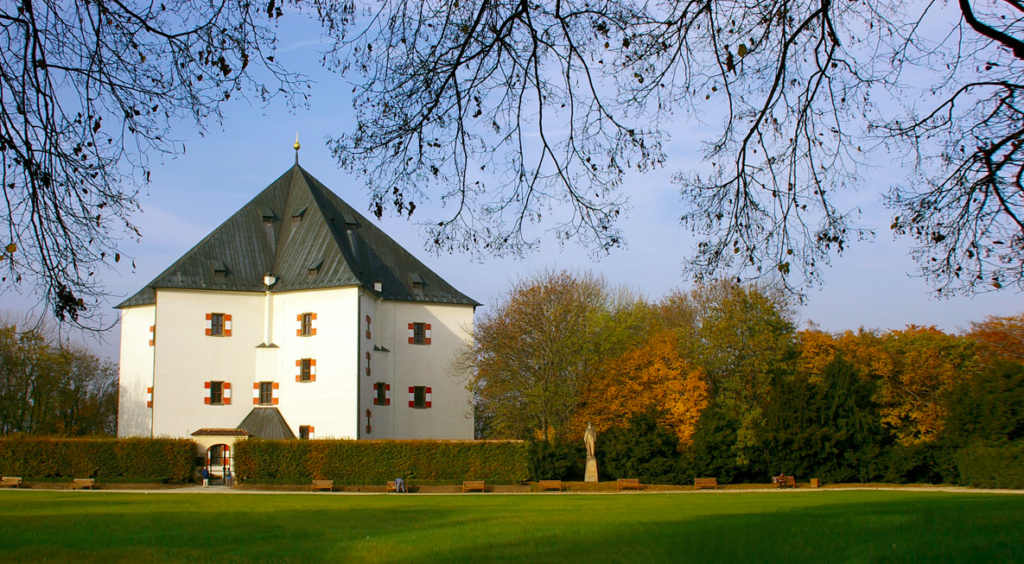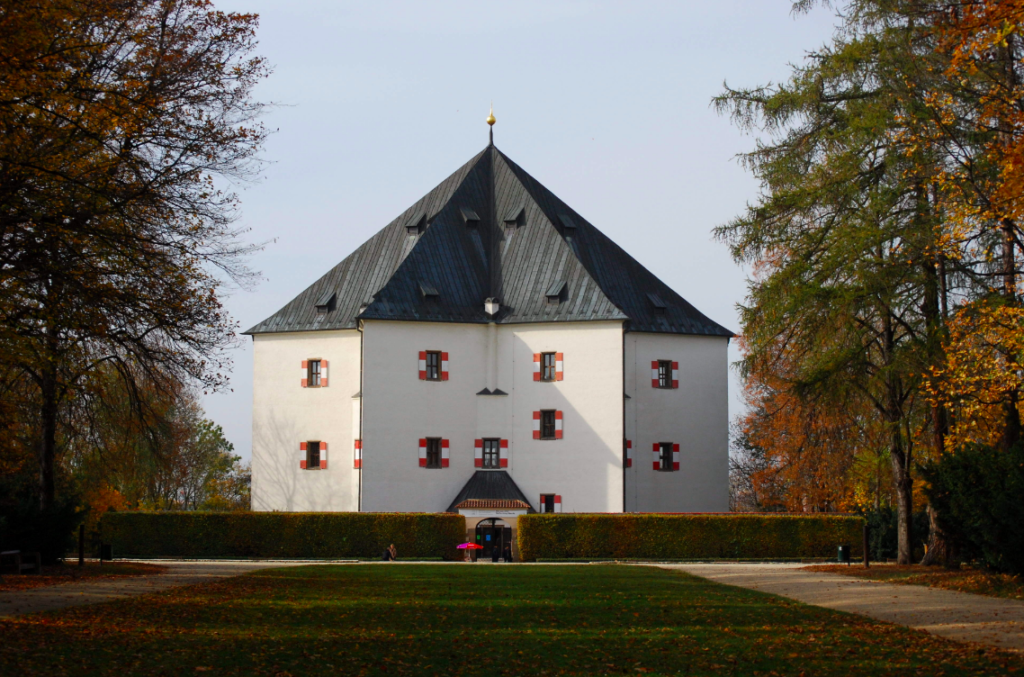The demolition of the Marian Column was one of the most iconic events of the newly proclaimed republic. The monument was seen as a symbol of the Habsburg Monarchy, and it paid the price. The column has opponents even today.
“Her head was violently severed from her body,” said Zizkov anarchist Franta Sauer, describing the demolition of the Marian column and the decapitation of the Virgin Mary. Sauer played a key role in the demolition of the column, which was surrounded by a large crowd on the first Sunday of the new era of the Republic.
The crowd of people marched into the centre of Prague from Bila Hora 101 years ago. It was a heated anti-clerical reminder of the fateful battle in November 1620. Sauer was assisted by the Zizkov firefighters, whom he had met in a pub in Zizkov. They supplied not only the manpower, but also the necessary ropes, chisels, and hammers.
There was a fight between the enthusiastic revolutionaries and the group of people who wanted to defend the baroque monument. The guardians of the column did not succeed, however. “Just take it down!” shouted socio-democratic politician Josef Stivín.
The revolutionaries wanted the fragments of the monument to be thrown from Charles Bridge into the Vltava, but this did not happen. Likewise, thankfully it was possible to prevent the destruction of the statues standing on Charles Bridge.
The debris of the monument instead ended up behind the gates of the municipal court at Prague’s town hall. The head of the Virgin Mary and fragments of the monument were later moved to the Lapidarium of the National Museum. After the act, the National Committee dissociated themselves from the demolition of the monument.
As the aftermath of the rebellion started to calm down, there were a few proposals to restore the monument. This did not happen in the era of the First Republic. After 1989, however, the situation began to look hopeful. A collection was created and the renovation of the monument was started in the studio of sculptor Petr Vána. There were also official hearings.
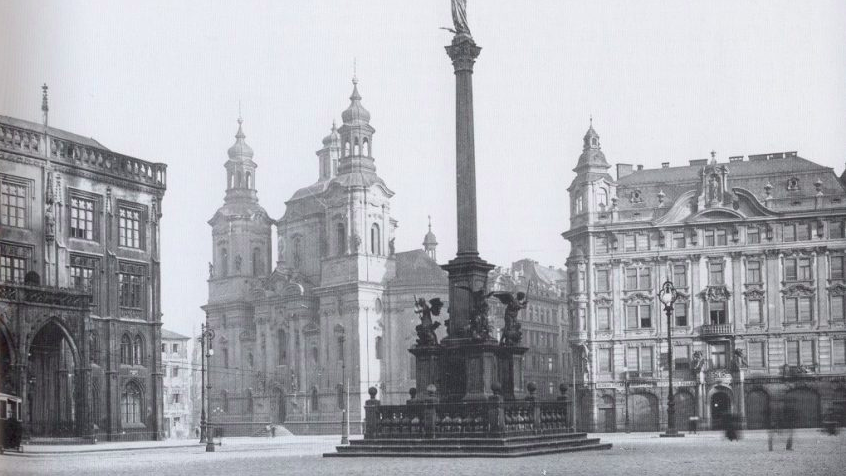
An unwanted monument
The story of the return of the sculpture and contradictory rumours spread like wildfire. The National Collection began 23 years ago, and in June 2017, supporters of the renovation received positive feedback from the construction department of Prague 1 town hall and intended to start working on it in the Autumn of that year.
Today, the sandstone replica of the Marian column is finished but remains with sculptor Petr Vána in his studio.
The construction of the memorial started in 1650 and it was festively consecrated by Prague´s Archbishop Cardinal von Harrach two years later. The Marian Column comes from the workshop of the most important Czech Early Baroque sculptor Jan Jiří Bendl and it is set by the statue of the Virgin Mary Immaculate.
The Marian Column was also very important for time determination because its shadow was showing the high noon during its fall over the Prague Meridian.

The coming cold weather means that outdoor skating rinks will start opening across Prague. Most places let you rent skates. The start dates, admission price and services at each rink differ.
One of the earliest ones to open in the center is at Na Františku in Prague 1, which should start November 18 (depending on the weather conditions). This one has an admission of Kč 70 for adults and Kč 40 for children.
Letná Plain in Prague 7 will have the largest rink, at 20 by 40 meters. The skating season will start there on November, 29th. This rink has an accompanying program for children who will have their own area and trained skating instructors. It is open till March 1, 2020, and admission is free. Ice skates rental is available.
Prague 8 will open two ice rinks as well: at the Glowacky Elementary School and at Ládví Swim Centre on November, 25th. A skate rental service will be available at both locations.
In Prague 6, the artificial ice rink at Dejvice district will be open daily from 9 a.m. to 9 p.m. The mobile ice area 18 x 25 meters is located at Victory square, near Šolínova street, where Farmer´s markets usually take place.
One of the most popular is in the city center at Ovocný trh, behind the Estates Theater. The opening ceremony takes place on St Nicholas (Sv Mikuláš) Eve, which is Dec. 5, at 5 pm with a special program. It will be open till the end of January, and admission is free.
In Prague 5, you can head to the Ice Stadium Nikolajka. An ice hockey stadium with a long tradition (established in 1961), it will serve for public ice skating during the weekends. The entrance fee is very low (only 40,- CZK) and same for 14 years. Open from November 16.
Germany’s ambassador Christoph Israng posted a photo of a Hitler-like rubber mask displayed in Prague at a souvenir shop, asking why such “trash” is out on the streets.
“The Czechs suffered so much under the Nazi regime. Why is such trash sold in the center of Prague now?” Ambassador Christoph Israng tweeted on Friday, without naming the shop.
??Češi za nacistického režimu tolik trpěli. Proč se teď v centru Prahy prodává takový odpad???Die Tschechen haben so unter den Nationalsozialisten gelitten. Warum wird solcher Schund mitten in Prag verkauft? pic.twitter.com/30cED6aLyI
— Christoph Israng (@velvyslanec_SRN) November 1, 2019
Czech Interior Minister Jan Hamacek soon weighed in, informing the ambassador that the police were looking into the matter.
Israeli ambassador Daniel Meron also weighed in on Twitter, condemning the masks as an “affront to Holocaust survivors.”
“80 years after beginning of WW2 and 75 years after the Liberation of Auschwitz, we should join forces to fight such spread of extremism and hatred,” Meron said, thanking Israng for “raising attention.”
The sale of such costumes is an affront to Holocaust survivors and their memory. 80 years after beginning of WW2 and 75 years after the Liberation of Auschwitz, we should join forces to fight such spread of extremism and hatred. Thank you for raising attention
— Daniel Meron (@AmbMeron) November 1, 2019
Propagating ideology aimed at suppressing human rights is punishable in the Czech Republic.
Up to 260,000 Czech Jews are estimated to have been killed in the Holocaust, after Nazi Germany annexed the Czech border region of Sudetenland in 1938, in the lead up to the World War II.
Like many European countries, Czechia has traditionally celebrated All Souls’ Day, called Dušičky in Czech, on November 2. On this holiday locals bring flowers and wreaths to the graves and leave burning candles as a guiding light for the dead souls. However, the concept of American-style Halloween has also become popular.
Ghosts Parade (November 1, 2019)
The Parade of Ghosts will take place on November 1 in 2019, you can either walk in the parade or watch along the sidelines, but either way, you’re in for an extravagant display of some of the greatest costumes in town.
Bloody Sexy Halloween (November 1, 2019)
The Bloody Sexy Halloweekend at SaSaZu is the largest Halloween party in the country, with over 5,000 attendees each year. The sexiest & wildest party of the year attracts the best international DJs. There is also a large cash prize for the best costume.
Wonderland Halloween at Lucerna Music Bar (November 1, 2019)
Wonderland Halloween is another party worth visiting. Lucerna Music Bar at Wenceslas Square hosts op domestic DJs, dozens of actors, dancers, and animators with digital decorations on the walls create a great vibe at Wenceslas Square. Talking pumpkins, flying ghosts, animated skeletons enhance the atmosphere.
Día de los Muertos at Zlute lazne (November 2, 2019)
An interesting program features Mariachi Azteca de Praga – an original Mexican Mariachi, children’s workshops, a kid´s area, a photo corner, dancing workshops, and a DJ party. There will be the traditional OFRENDA (altar), which represents four elements – earth, wind, fire, and water.
Yelloween at Zlute lazne (November 3, 2019)
On Sunday 3rd, from 4 p.m. kids and adults can enjoy Halloween show in the area of Zlute lazne. Haunted trails, an accompanying program full of competitions, fun and art activities will be available.
On Thursday, October 31, the Czech Senate approved the amendments to the law on railway transport, which allow the use of trains without drivers.
The construction of a new fourth metro line in Prague, which will be marked by “D” letter and blue color, will begin by the section from Pankrác to the Olbrachtova station and it should cost 39.7 billion crowns. The first section will also test the operation in automatic mode – without drivers, which will speed up the putting line D to operation.
Construction will be preceded by an archaeological survey that is set to begin this summer and is expected to take about a year.
Construction works on the line will be launched at Pankrác station, outside the Arkády shopping mall. This is where the tunnel boring machines will be brought under the ground. Construction of the Metro’s D route was originally supposed to start in 2010, but it was postponed due to various reasons, including problems with acquiring all of the lands.
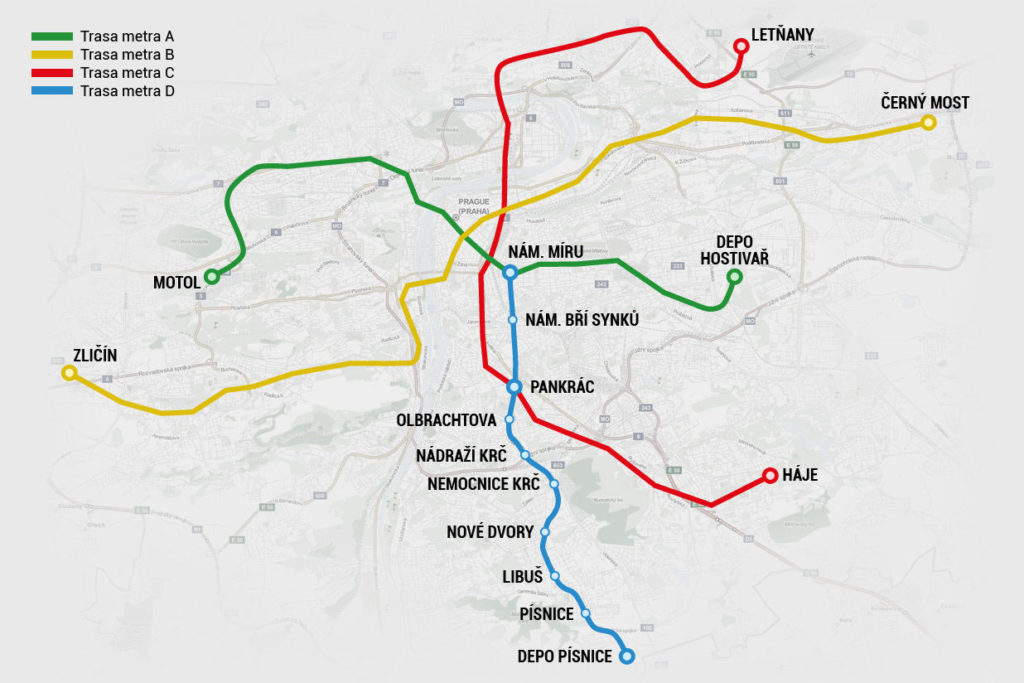
The completion of the metro D construction will also mean a significant improvement in the environment. The amount of pollutants is expected to decrease by almost 60 tons per year. At the same time, the number of cars heading to the center will fall by more than 18 million a year.
Metro D is a planned subway line that will connect the city center to neighborhoods in the southern part of the city that now has poor public transportation options. The trains will be driverless.
According to City Hall, the first section of Metro D between Pankrác to Nové Dvory, should be put into operation by the end of 2027.
The Metro D line has faced numerous delays. Construction was originally supposed to start in 2010. There was a petition in 2016 to change the approved designs for the stations between Pankrác to Písnice because the designs are already outdated, and do not reflect current trends in mass transit.
Vladimír Pinta played the saxophone and trombone on the Old Town Square for 17 years. Originally a teacher, he performed in cafes, nightclubs, ships, and foreign hotels. Although his love to perform is on the street, he was threatened with thousands of crowns fines due to the new Busker Decree (recently became valid).
The 86-year-old has been performing regularly on the streets of Prague’s center since 2002. The municipality excluded street artists from the Old Town Square and the musician had to leave his usual place.
Vladimír Pinta sits comfortably on his folding chair opposite the Baroque church of St. Nicholas. With his back to the Old Town Square, he prepares a mouthpiece for his saxophone. While carefully cleaning the musical instrument, people look at it curiously.
The ban on so-called busking extends to the whole of Old Town Square, Velkopřevorské náměstí, náměstí Míru, Nerudova Street and part of Spalena. In addition, it prohibits “appearances in disguises of animals or characters from films, television programs or computer games” and “appearances in disguises clearly beyond the proportions of an adult.”
“As soon as I blow, I’ll tell you a nice story,” said Vladimír Pinta. He used to perform on Charles Bridge—where the amended decree does not apply and is governed by separate conditions—but had to leave his spot.

Source: Vladimir Pinta Facebook
He has no fear of city policemen and intends to defend himself against a possible fine. Years ago, he obtained permission to operate artistic activities in public space and intends to prove it in the event that the officers hit him. This also happened on Sunday and, in his words, his permit did not help him with the police officers, so he had to leave his place under the threat of a fine.
“On the street, I can see what the regime has changed,” he says. When the musician plays the first tones of his favorite jazz records on the saxophone, tourists and strangers stop by and listen to him with a smile on their lips as they record Vladimír Pint on their phones.
The artist is a favorite among tourists in Prague; his recordings of theatrical performances can be found on a number of YouTube videos. He even has a fan group on Facebook. People throw small coins into his hat and get a sight from his wife.
“And now I’ll play Ave Maria unaccompanied”
He goes to the center to play from Revnice near Prague, where he lives with his wife several times a week (according to his mood). Years ago, Vladimír also performed in cafes and nightclubs throughout Prague, and during his engagement, he met Karel Gott at Alfa Café on Wenceslas Square. While he was already a seasoned musician, Gott’s career was just at the beginning.
Pint used to play with Bob Šmidrkal, Ladislav Bezubka, Zbyněk “Hennessy” Červinka or Karel Hála, and Olabí Svobodová.
“When the Russians arrived in ’68, the whole band I played with ran away to Germany and no one could understand why I didn’t run away with them.” “And now I play unaccompanied Ave Maria,” he says, beeping and then singing. The financial contributions from the listeners did not wait long.
Nevertheless, during his life, Vladimír Pinta has become famous abroad as well. “He could play in various places; he was recently invited to Mexico, too. But he’s happy and especially to play whatever he wants,” explains wife Daniela Pintová.

Photo: Jakub Plíhal
Sinatra [and] salsa
Vladimír Pinta also likes to play his own compositions, which mostly deal with contemporary society and problems. You can also listen to them on the Internet Youradio.
“I like this one,” he says before blowing into the saxophone, from which the tones of Sinatra’s hit The Way You Look Tonight line up with the accompanying music from the speaker. Pinta sings not only in Czech and English but also in Italian or Spanish. He learned the correct pronunciation of Latin and Spanish songs from [a] Colombian, whom he met during one of his street-playing sessions.
Mr. Pinta does not understand the municipality’s decisions too much. “It’s strange. We were in Valencia and the buskers we met in Prague, we met there. They take turns in different places and may have amplifiers. I don’t understand why they cut it here,” he says.
“I’m not the one lying in bed watching or walking in the waiting rooms. So if I have to go away, I’ll go abroad for example,” concludes the musician, then puts a saxophone back in his mouth and closes his eyes to begin another tune.
After being banished from Old Town Square, he moved temporarily to the nearby Franz Kafka Square.

Source: Vladimir Pinta Facebook
Levain Bistro is the perfect destination for food lovers, just between Havlíčkovy sady and Krymská, on Kozácká 6. With a quiet and cosy atmosphere, this restaurant is open from Tuesday to Saturday from 11 am to 11 pm, with brunch on Saturday and Sunday from 11 am to 3 pm.
The menu of this bistro, located in a trendy neighbourhood, uses fresh and locally-sourced ingredients for their dishes, that change depending on the season. They offer seasonal menus, cocktails, natural wines and local beers. A wide variety of plates and tapas await you, as well as unique pizzas.
This relaxed but fun place serves amazing artisan pizzas with home-milled flour and unique flavours like the duck pizza with homemade duck sausage, aubergine, tomato and chilli relish. On the menu, you can also find starters, salads or mouth-watering mains such as the Mexican brisket, with roast onion, black garlic, corn puree and pickled onion.
For brunch (served every Saturday and Sunday between 11.00 and 3.00 pm) Irish scones and ploughman’s bread are among the selection of treats you can have. Try their breakfast pizza with ham, cheese and eggs or even their hangover hog: sausages, bacon, eggs, mushrooms, fried potatoes, tomato and toast.

Source: Levain Facebook

Source: Levain Facebook
The restaurant has a cosy ambience and friendly staff. The chef and owner, Jason Legear, has been all over the world for the last 20 years (that’s how he gets his inspiration from.) Ireland, Australia, New Zeland, Korea, Toronto, San Francisco, Belgium, Scotland and London are just some of the places he has visited or worked. Now, installed in the Czech Republic, he gives his personal touch to every dish with an exotic flavour and different texture combinations.
Written on the boards, you will find a great variety of tapas, along with the specials of the month, the fish of the day, wine of the week and last but not least, desserts.
The wines are all organic and excellent quality. They also offer beer (Hendrych) and Cider. Plus, don’t forget to ask about their homemade lemonades, made by the chef himself, or order one of their excellent cocktails. They have a considerable variety like ‘Poquito Picante’, with gin, Grand Marnier, coriander, jalapeño and lime, or ‘Ginger Step-Child’ with vodka, falernum, carrot shrub, ginger and egg white.
Also, keep an eye for the second edition of their successful Wine tasting and Food pairing. The 5th of November, for 1190 CZK per person, you get a welcome drink and six delicious seasonal dishes paired with six natural wines carefully selected by Fajnšmekr. The degustation menu includes plates such as cauliflower and apple salad with coconut and ginger dressing or goats cheese, hazelnut crust, pine poached and Jerusalem artichoke. For events like this one check the Levain Facebook page, where they upload all the exciting things to come.
Try creative food with friendly and knowledgeable staff. Levain is a comfortable place to sit and share a meal that looks familiar but has a unique twist. Be ready to expand your flavours and tastes.

Source: Levain Facebook

Source: Levain Facebook

Source: Levain Facebook
Prague has placed 99th in the ranking of cities with the best hospital care in the world, according to a new report.
The ranking, compiled by the British startup company Medbelle, took into account not only the quality of medical care but also its accessibility for all citizens.
In the survey, Prague performed particularly well in the availability of medical care. Overall, Tokyo placed first in the ranking, followed by Boston, London, and Paris. Dubai came in 100th place, just behind Prague.
Medbelle pointed out that the presence of a world-class hospital is not the most important criterion for performing well. Other factors like infrastructure and the availability of medical care to all citizens also played significant roles in the overall ranking. If there is no easy access to health care, there is still room for improvement, the company said.
Medbelle’s ranking was based on several criteria. Regarding the quality of health care, the authors of the ranking focused on factors like patient satisfaction and the success of cancer treatment.
The infrastructure evaluation included the number of top-level hospitals and leading medical universities in a city, the number of hospital beds per capita, and the number of nurses, surgeons, and psychiatrists per capita.
The availability of care was based on the price of medicine and on whether health facilities serve all citizens or only the rich and privileged ones.
The first demonstrations took place in January 1989. Protesters marking 20 years since Jan Palach self-immolated in protest against the Soviet-led invasion of 1968 were brutally dispersed by police.

The next protest was held on October 28, 1989, the anniversary of the founding of Czechoslovakia in 1918.

November 17, 1989: the biggest protest for 20 years.

On November 19, riot police blocked a bridge to prevent protesters marching to Prague Castle.
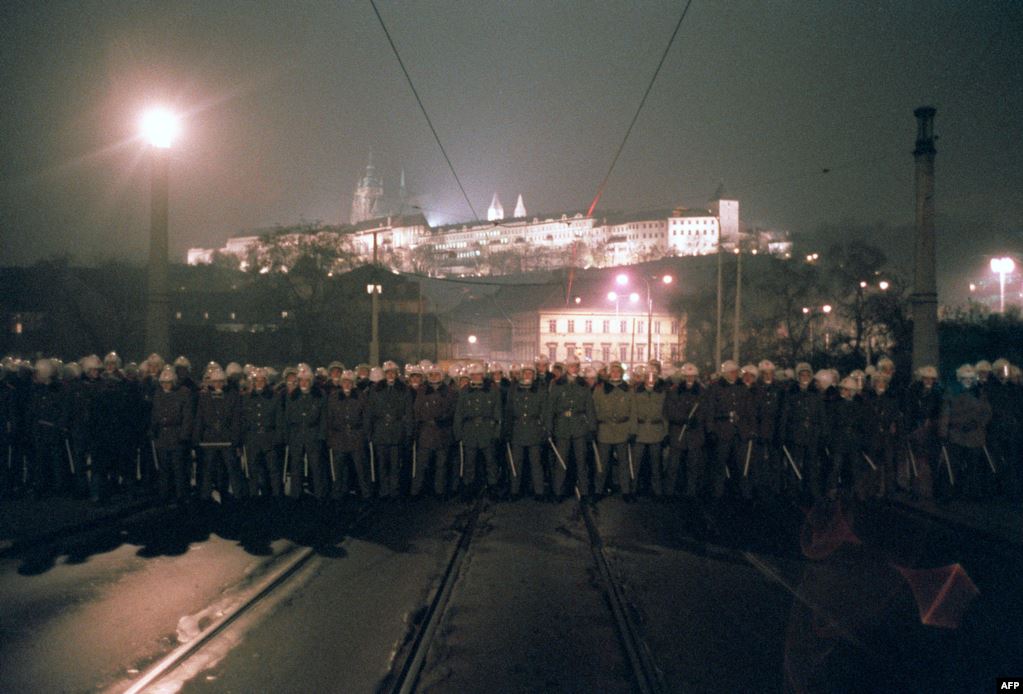
On November 21, more than 200,000 demonstrators took to the streets of Prague for a fifth consecutive day of protests.
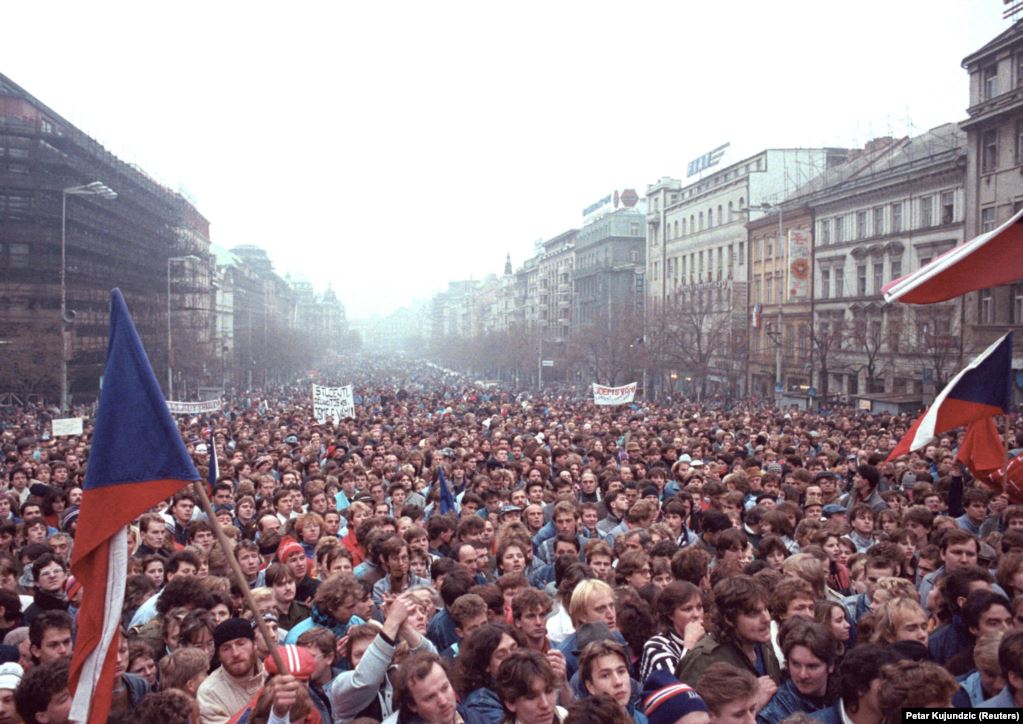
Vaclav Havel addressed the massive crowd from a balcony overlooking Wenceslas Square.

Half a million people came to listen to speeches from Havel and other opposition leaders.

Wenceslas Square, December 19, 1989.

On December 29, 1989, Vaclav Havel and his wife, Olga, greeted citizens at Prague Castle after being appointed by the Federal Assembly as the new president of Czechoslovakia

December 31, 1989.

The exhibition delivers an overview of the remarkable career of Alberto Giacometti, a peculiar artist who has marked the world of modern art.
By Sarah Duchêne – Anglo American University
From Paris to Prague for the very first time ever, an impressive exhibition of Alberto Giacometti is taking place at the National Gallery Prague until the 1st of December. In collaboration with the Foundation Giacometti, more than 170 works trace the history of the artist including not only his sculptures but also paintings and drawings.
Through this chronological exhibition, viewers will discover his earliest works, and then follow his progress in Paris after his encounter with the Surrealists there. The outstanding number of works also reveals the artist’s polymath and perseverance.
Since his early childhood, Giacometti (born 1901 in Switzerland) was raised in art by his father, Giovanni Giacometti, who was an Impressionist painter. While most children play with toys at this age, Alberto made his first sculpture at the age of 13. He also made many Neo-Impressionist paintings in his youth. In 1922, he moved to the City of Lights to study at the Académie de la Grande Chaumière where his sculptures revealed his new interest in Cubism.
His entry into André Breton’s Surrealist circle was the turning point in his career. After this, Giacometti gained attention for one of his most famous sculptures from this time, Suspended Ball (1930-31). This floating ball on a crescent locked in a cage was described by Salvador Dali as the prototype for “an object with a symbolic function.” This unusual sculpture mixes dream and eroticism, and it is one of the centerpieces of the current exhibit in Prague.
Giacometti’s Surrealist phase ended a few years later. He became more concerned with the question of the human head and the model’s gaze, and less interested in movement. For him, the mystery of the human head became the seat of a human being from his perspective.
For models, he mostly used his younger brother Diego, or close friends only. His fascination with the head also appeared in many drawings and paintings. At this point, his shift from Surrealism seemed to be philosophical, as an Existentialist more focused on the human being. Jean-Paul Sartre even wrote essays about Giacometti’s art and his question of perception.
Besides the head, the size of the sculptures remains a special trait of Giacometti’s art. His early works were sometimes so tiny that they fell apart. One of his most famous tiny sculptures is the figure of Isabelle Delmer, one of his close friends, placed on a pedestal. The fact that they are so tiny reflected the distance he instituted between him and his models.
Giacometti once said, “But wanting to create from memory what I had seen, to my terror the sculptures became smaller and smaller.” His sculptures changed after World War II when he started to create the taller and highly slender figures that he is most famous for today.
Alberto Giacometti was not a typical artist; he lived only for his art. He had an unusual determination, a passion for his sculptures to the point that he almost lived in his studio. It looked like a mess; it was tiny and dark, but he liked it that way. To carefully look over his many sculptures, paintings and drawings is the only way to understand, or maybe not, the career of one the most influential artists of his century.
For more information about the exhibition, see the website for the National Gallery Prague.
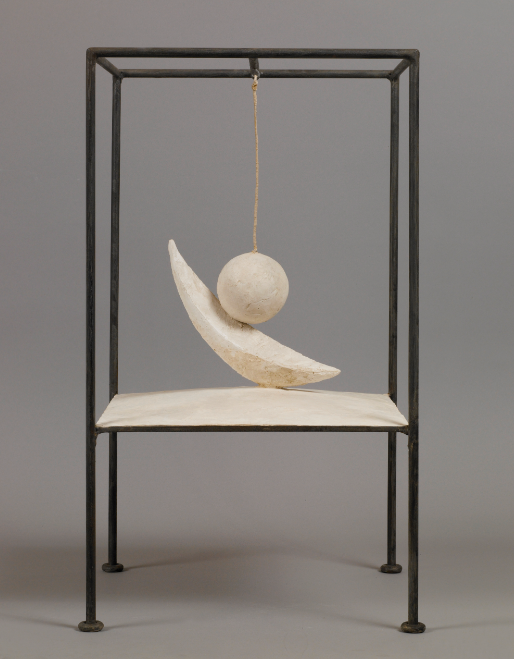
Alberto Giacometti, Zavěšená koule, 1930–1931, © Estate Giacometti (Fondation Giacometti + ADAGP) Paris, 2019
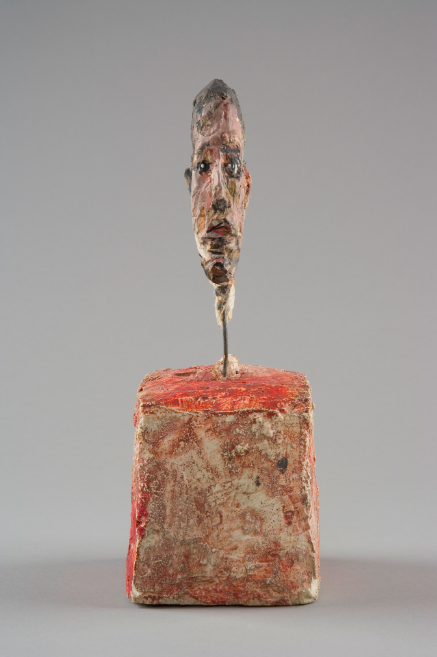
Alberto Giacometti, Hlava muže na podstavci, 1949–1951, © Estate Giacometti (Fondation Giacometti + ADAGP) Paris, 2019

Alberto Giacometti, Stojící žena, kolem 1961, © Estate Giacometti (Fondation Giacometti + ADAGP) Paris, 2019
There’s no easy way to buy, send or spend cryptocurrency in person — not even for a slice of pizza or a cup of coffee, or so it’s been said. Meanwhile, the number of physical merchant locations that accept crypto payments keeps growing.
As of late October 2019, 15,558 business venues worldwide were accepting Bitcoin as a method of payment, up 18% from a year earlier, according to Coinmap.org. The crowdsourced heatmap, devised by Satoshi Labs in 2013, draws on input from consumers and merchants.
While Europe remains the hottest continent for in-person Bitcoin transactions, the most torrid city is now Ljubljana in Slovenia, with 314 venues. Last year, Prague held that distinction.
In Prague, one can reportedly rent apartments and attend films paying in crypto. The Czech capital counts 170 venues (bars, restaurants, hotels, cinemas, and other attractions) where Bitcoin is accepted as a method of payment.
This also includes a dozen ATM’s where people are able to take out cash from digital currency accounts, and more than a dozen restaurants, cafés, and shopping venues.
Prague is home to the Bitcoin Coffee, part of the Paralelni Polis building, an experimental alternative centre launched by art group Ztohoven in the Holešovice district, which also hosts a co-working space and an “Institute of Cryptology”.
Bitcoin transaction costs have dropped dramatically over the past two years — high fees were another reason cited by Stripe for leaving the business. The average Bitcoin transaction fee reached a high of $54.90 on Dec. 21, 2017, but on Oct. 22, 2019, it was less than one hundredth that amount: $0.53 per transaction.

Source: coinmap.org
An excellent trip for a pleasant walk in Prague is to go to Obora Hvězda (Hvězda Game Reserve) and Letohrádek Hvězda (The Hvězda Summer Palace,) in Prague 6.
The area has maintained its atmosphere, mainly because of the summer palace with its atypical six-pointed star (hvězda) shape – from which both the park and the palace get their names.
Even though it is located in the city of Prague, it guarantees a quiet and peaceful atmosphere surrounded by nature. The Hvězda Game Preserve is an ideal place for a stroll and a visit to the Hvězda Summer Palace, that holds exhibitions, concerts, and other cultural and social events throughout the year. An exhibition regarding the Battle of White Mountain, which took place nearby in 1620, is on permanent display inside the publicly accessible villa.
It was built according to the plans of Archduke Ferdinand II of Austria, in the shape of a six-pointed star, symbolizing the principles of harmony, proportions, symmetry and numeric. Both, the summer house and the Hvězda game preserve were registered in the list of National Cultural Monuments in 1962.
You can get there by bus, tram or car. We would recommend taking the tram to stop “Sidliste Petriny” or “Vypich”.
The park, enclosed by a huge wall, has three main gates (Libocká, Pražská and Bělohorská,) plus several smaller ones.
With three majestic tree-lined avenues that served as entertainment and hunting for Renaissance aristocracy, now is a place where you can go for a walk, a run or a bicycle ride. The main road crosses the whole park and leads us to the summer house. From the main road, we can also take other variant routes.
The game preserve is accessible for the public throughout the year, and the palace is opened from April to October, every day except Monday, between 10:00 a.m. and 6:00 p.m.
